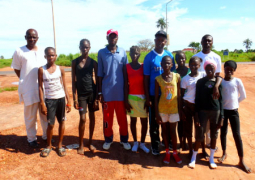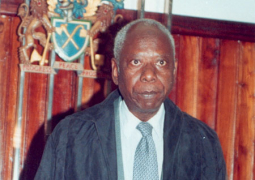
African fabrics dominating the fashion world of women in Africa and elsewhere on the globe has taken over the fashion industry in The Gambia as both young and old women as well as children and even our male counterparts are wearing nothing more than African fabrics these days.
According to research findings, the earliest surviving sub-Saharan African textiles were discovered at the archaeological site of Kissi in northern Burkina Faso and date to the first centuries.
They are made of wool or fine animal hair in a weft-faced plain weave pattern.
Further cloth fragments and parchment fragments date to the ninth century CE from sites at Igbo Ukwu of the Igbo people of Nigeria.
A considerable amount of cotton and wool textiles (clothes, shrouds and accessories) has been preserved in the Tellem caves in Mali, dating mainly to the eleventh and thirteenth centuries.
Some fragments have also survived from thirteenth century Benin City in Nigeria.
African textiles are a part of African cultural heritage that came to America along with the slave trade and in most of Africa the weavers were men while the women spun the thread.
Some examples of African textiles are Akwete cloth woven by Igbo people, Ukara dyed indigo cloth by Igbo people, Aso oke fabric - woven by Yoruba people, Adire- tie-dye produced by Yoruba people, Kente cloth - woven by Ashanti and Ewe people, Barkcloth - produced by the Buganda tribe, Mudcloth- produced by the Bambara tribe, Kitenge, produced from Kenya and other regions of East Africa, and Shweshwe – produced in South Africa.
Fashion can be defined by people the way they deem fit because it is not about how much you spend on a fabric but the way and manner in which you blend and mix it with another colour of your choice and sew it with the style you feel comfortable in.
These days in The Gambia, while going to work, to the market or running an errand, on your way going you must meet with one, two or more women, girls, children, boys and men wearing long overalls, t-shirts, trousers, short or long sleeves shirts, bags, shoes or more made out of nothing but our beautiful African fabrics.
Who said you need to belong to a particular class, background, city, town, village or even a hamlet to wear an African fabric dress of your choice? It is worn to be comfortable as an African woman, man, boy or girl in something that depicts who you are and as well connect you to your root.
In the past we had seen young beautiful African ladies and handsome gentlemen turning their back on African dress or fabrics for reasons best known to them.
In The Gambia then, a young lady or woman would only wear African dress or fabrics when going to attend a wedding or naming ceremony.
Our young handsome gentlemen also used to wear African dress only on Fridays when going to the mosque for Friday prayers or going to weddings of their male counterparts.
You will all agree with me that some of our young women in the past didn’t know how to wear and tie lappers around their waist while our young men used to remove the “Haftan” immediately after the Friday prayers.
However, now the trend is changing because in the world of fashion everything is possible.
Our young women and men in the fashion world with their magic hands and touch have changed the mindset of the young towards the African fabrics by giving it a new dimension, look, taste, style and class.
They have made the young African men and women to know there is more to the African fabrics than just sewing it for “Haftan”, “garanbubu” but that you can turn the style to your liking and will feel comfortable in it.
We have lots of beautiful African fabrics in our local markets but the most favoured ones of them are the Ghanaian and Nigerian fabrics for their taste, colour, texture and quality.
You can buy a fabric at D200 and it may look cheap to you but adding class to it is possible when you create a seductive style that is unique only to it. It can be put on to go to work, naming ceremony or just for strolling to chill out.
It all depends on you: if you want it short, long, tight, or lose the choice is in your hands.
You can go in for a three-quarter dress, blend it with a high heel shoes made out of a colour from the fabric you are wearing, with a handbag to match it with.
The feeling of dressing yourself entirely on an African fabric is unexplainable because it’s always nice to feel natural and be in control for your true identity.
Are you a lady putting on the veil, you too have a place with African fabrics. Buy one beautiful fabric on your way from work, took it home and think of a crazy style or you want “dagit ak tubeye”, make the hand of the shirt a bit tight at the end, loosen the trouser a bit, get a veil that matches a colour in the fabric, and when you put that on for that special someone, he would give you the key to his heart without a second thought.
Be creative in choosing a style, for a cheap fabric can be turned into a classy outfit that you can use to dine with kings and queens.
Fashion should not be expensive when purchasing the material but make it looks expensive when you rock it because it is in you.
Why not make best use of our African fabrics that can connect you to your roots other than trying fashion items that are alien to you and your culture. It is what the young ladies and men of these days used to fancy.
But you can do something different and better with African fabric; so why not give it a try and look natural.
Ladies, try it: choose African fabrics and create wedding dresses out of it for that big day in your life.




